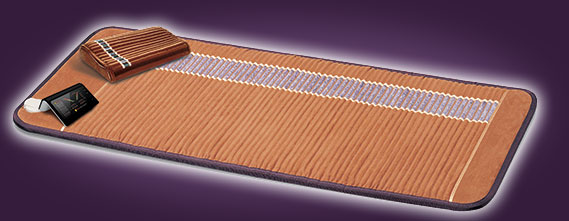|
Women reach the menopause years typically around the age of 50. When this happens, a variety of physiological changes and associated symptoms occur that can sometimes have a profound impact on their lives. While the symptoms of menopause vary, there are a few that are remarkably consistent. Consider the following general symptoms of menopause and the natural means of treatment that Dr. Weil recommends.
- Hot flashes. These typically begin to occur when women start to have irregular periods, and usually end one or two years after menstruation has ceased. Hot flashes can be experienced as flushing or warmth in the face and upper body, or as sweating and chills. Black cohosh (Cimicifuga racemosa) is a traditional herb that may help alleviate hot flashes. Natural therapies such as yoga, visualization and Traditional Chinese Medicine may also help.
- Depression. Perhaps due to hormone changes, depression is a side effect of menopause that some women experience. Following an anti-inflammatory diet and getting regular exercise can help address mild depression. Understanding and accepting that menopause is a transitional phase that is a natural part of life can help as well.
- Insomnia. If you experience insomnia, consider valerian and melatonin. Valerian is a sedative herb – take one to two capsules a half hour before bedtime. Melatonin is a hormone that regulates the wake/sleep cycle and other daily biorhythms. Sublingual tablets placed under the tongue and allowed to dissolve are a good choice – take 2.5 mg at bedtime as an occasional dose, making sure that your bedroom is completely dark. (A much lower dose, 0.25 to 0.3 mg, is more effective for regular use.) Paying attention to sleep hygiene may also help: set a regular bedtime, make sure your bed and bedroom are comfortable, and prepare for sleep with a warm bath.
- Irritability and mood swings. If you find yourself becoming irritable and moody, try some breath work, such as Breath Counting. It’s simple: close your eyes and take a few deep breaths. Then let the breath come naturally without trying to influence it. Ideally it will be quiet and slow, but depth and rhythm may vary. To begin the exercise, count “one” to yourself as you exhale. The next time you exhale, count “two,” and so on up to “five.” Then begin a new cycle, counting “one” on the next exhalation. Never count higher than “five,” and count only when you exhale. You will know your attention has wandered when you find yourself up to “eight,” “12,” even “19.”
Headaches and vaginal dryness are other symptoms of menopause – your doctor can talk with you about the best way to address these concerns. Tests can determine if you are indeed in menopause, so don’t hesitate to see your doctor if you experience any of these symptoms. www.weil.com
|
|
|






 Hi I’m Catherine, founder of Wine Women And Chocolate. Want to become a contributor for Wine, Women & Chocolate? Interested in sharing your unique perspective to a group of supportive, like-minded women?
Hi I’m Catherine, founder of Wine Women And Chocolate. Want to become a contributor for Wine, Women & Chocolate? Interested in sharing your unique perspective to a group of supportive, like-minded women?